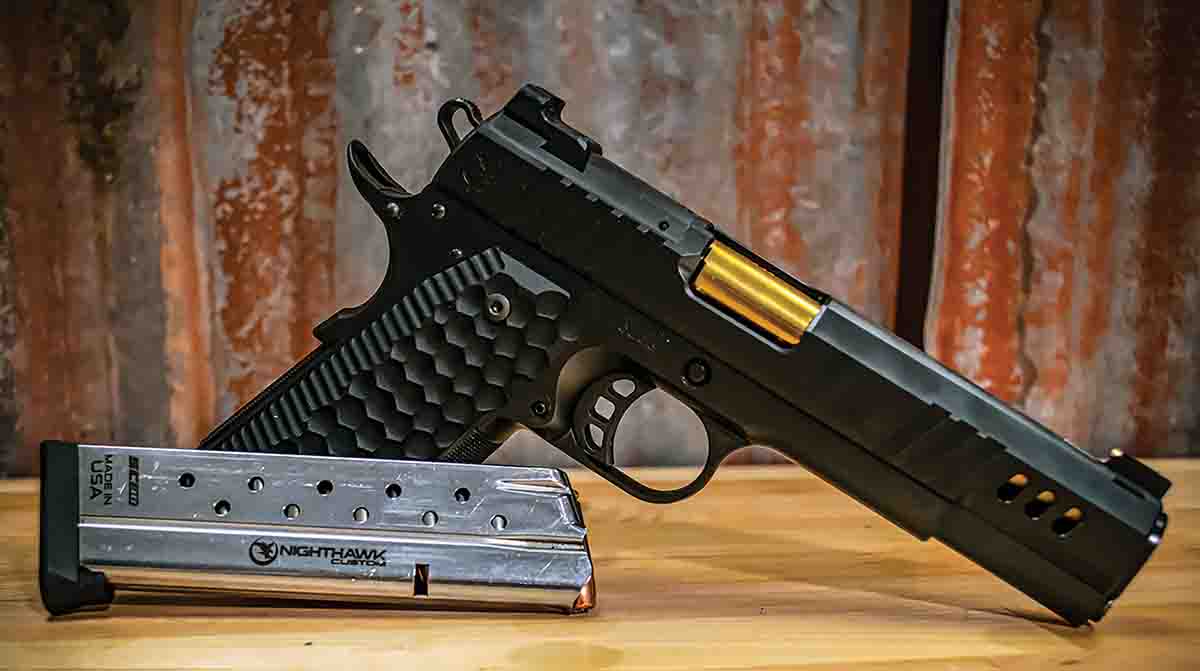
The Nighthawk Custom 1911 President was selected for all testing. It features a 12-round magazine that when chambered in 30 Super Carry is two more rounds than the version chambered in 9mm Luger.
There has been a lot of talk about the 30 Super Carry cartridge since its introduction at the SHOT Show in 2022. Around that same time, a quest for load data and components was started. With no published data at the time of this writing and few components available, it was quite a puzzle to determine where to start. As with most cartridges, the firearm used for testing can have a great impact on the overall experience with the cartridge itself. For this reason, a
Nighthawk Custom 1911 President chambered in 30 Super Carry was selected. The cartridge is what I wanted to put to the test. Nighthawk 1911s are well known for their quality and accuracy and seemed to be ideal for testing the full potential of this new cartridge. It also allows for a substantial amount of material to contain the high-pressure cartridge. It seemed wise to play the strength in materials game considering the lack of data available on the cartridge. At the time of this writing, the only other manufacturer offering firearms chambered in 30 Super is Smith & Wesson.
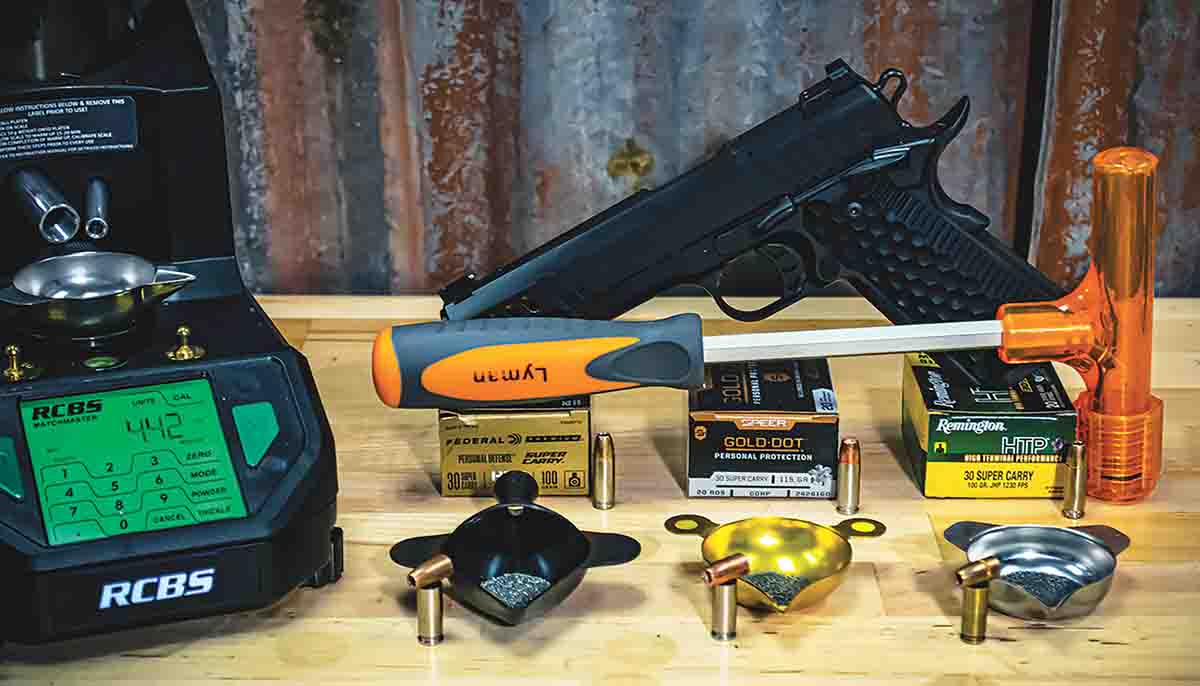
Factory ammunition was disassembled and examined, and data was carefully extrapolated from the results, QuickLOAD, Gordons Reloading Tool and similar cartridges with load data available.
The cartridge itself is now Sporting Arms and Ammunition Manufacturers’ Institute (SAAMI) approved and the maximum pressure was established at 52,000 psi. While this is pretty high, it’s not unheard of, and there are a few other cartridges that run at similar pressure numbers. The 30 Super Carry is the same overall loaded length as the 9mm Luger but is narrower. This allows for more rounds to fit in the magazine, and potentially more compact guns to be chambered in the cartridge, provided they can handle that maximum pressure. The case is very close in dimensions to the 7.65x20mm French Long or the 30 Pederson. Ballistically, it is similar to the 7.62x25 Tokarev, which is capable of launching an 85-grain Hornady XTP to about 1,300 feet per second (fps). With some load development, I was able to duplicate that performance easily with the 30 Super Carry. However, the 7.62x25 uses bullets that are .308 inch in diameter and the 30 Super Carry uses bullets that are .312 inch in diameter, commonly referred to as .32-caliber bullets.
Gathering and developing load data was tricky. The first step was disassembling factory loads from Federal, Speer and Remington. The powder charges were closely examined and weighed. Measurements were taken of loaded and disassembled ammunition, along with bullet diameter. Using a combination of Gordons Reloading Tool, QuickLOAD and cross-referencing data from similar cartridges the load data was slowly pieced together. Combined with some mathematics, enough data was finally established to begin the load development process. Only three different bullets were on hand for testing: the 85- and 100-grain Hornady XTP and the 100-grain Swift A-Frame revolver bullet. In spite of the bullets being meant for revolvers, they fed flawlessly through the Nighthawk 1911. Data was compiled with an array of powders that are displayed in the accompanying table. Caution is advised when working up loads in this cartridge, as small increments of powder can have a big impact on pressure. With the lack of published data, working up your own loads is at your own risk. Always work in small increments and use velocity as your guide for pressure.
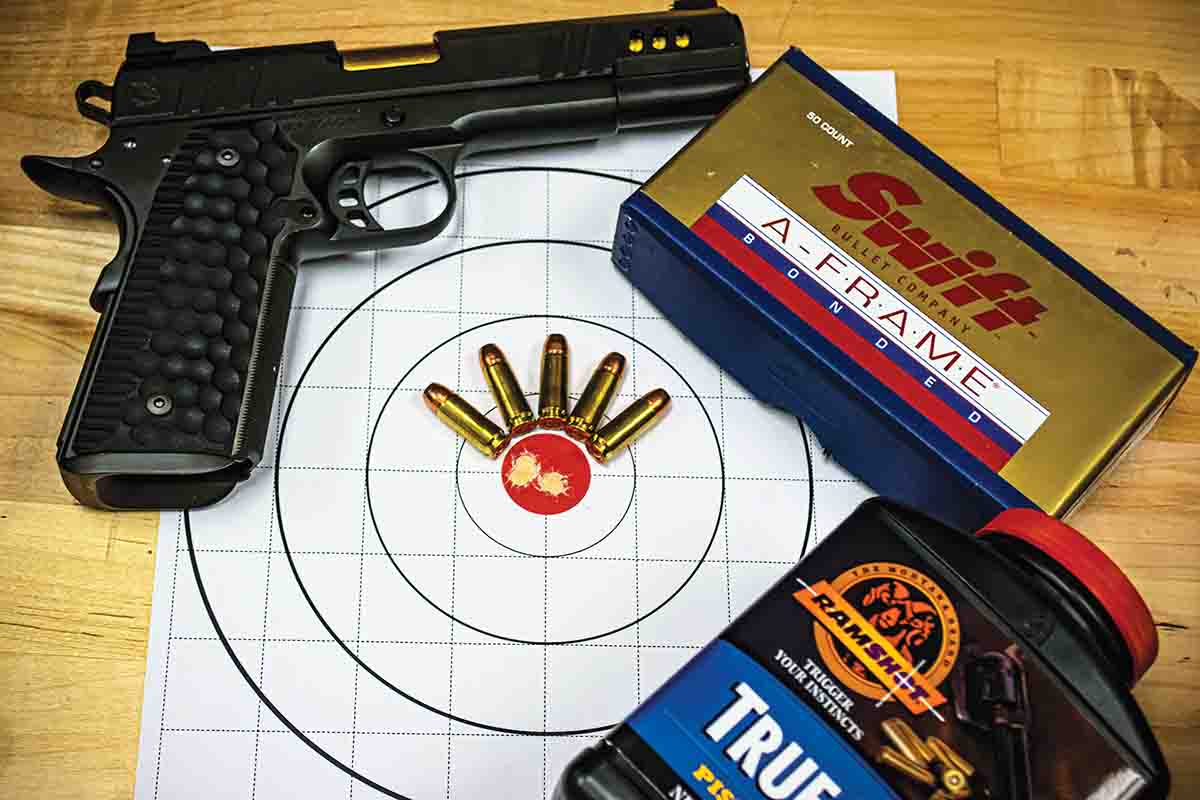
The best handload grouped into a mere .40 inch at 15 yards using True Blue powder and a Swift A-Frame bullet. While the bullet was designed for use in revolvers, it functioned and performed well in the Nighthawk 1911.
The process was simple once the data was developed, All cases used were once-fired Federal brass cases from factory ammunition. The cases were cleaned in a Tru-Square Ultra Vibe 18 Tumbler in walnut shell media, with a little Turtle Wax liquid car polish added to shine up the dirty cases. An appliance timer was used to prevent my forgetful self from neglecting to turn off the tumbler. An RCBS die set was installed into the Area 419 ZERO reloading press, the carbide sizing die sized all the cases without the need for lubrication. Cases were flared just enough to seat a bullet straight, which requires a bit of finesse, but is not as difficult as the .32 ACP. The primary concern with over-flaring is not so much the brass life, but rather, ensuring the case walls have sufficient tension to hold the bullet in place. This ensures the most efficient powder burn and should help lower extreme spreads in velocity strings. Cases were then primed with CCI 500 Small Pistol primers using a Frankford Arsenal hand primer. All powder was dispensed on an RCBS Matchmaster and charges were accurate to .04 grains. Bullets were seated and crimped using the built-in crimp ring of the seating die.
Environmental conditions were checked and both handloads and factory loads were tested. All load development was done with the Nighthawk 1911, locked into the Ransom International Master Series rest. A pattern began to develop, the loads were accurate and consistently reached the desired velocities. Only a single load exceeded the pressure and velocity previously established while building the load data. This load was removed from the table for safety purposes. The gun was then removed from the rest and with the gun in my hands, I began shooting it offhand and from supported positions. It should be noted that after the load development, the firearm was not cleaned. It performed flawlessly for the 450 or so rounds that were run through it at that time, and throughout testing, the firearm never malfunctioned. Overall, the range trip was quite pleasant and the weather was good for testing purposes.
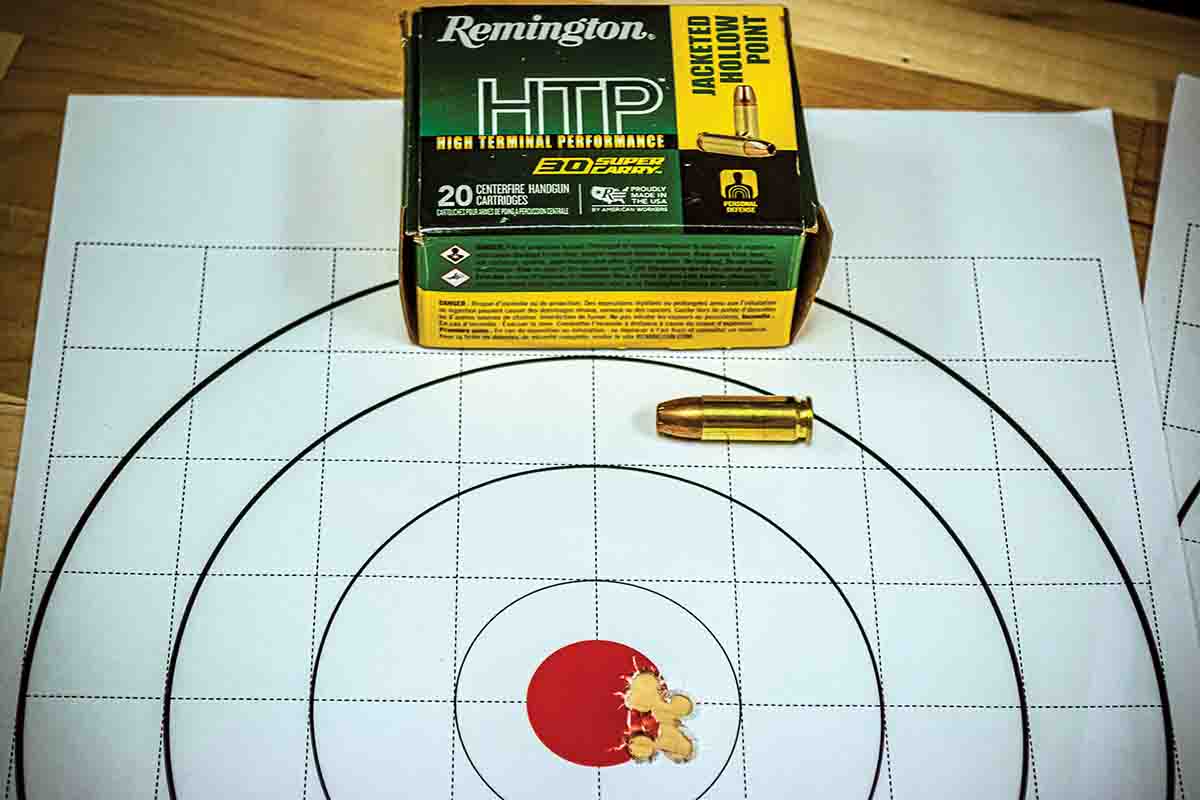
The best performer of the factory ammunition tested was the Remington HTP (High Terminal Performance) 100-grain HP.
The experience with the 30 Super Carry was a pleasant one, while this cartridge might not be everyone’s cup of tea, it certainly does have some applications. The cartridge is easy to load for, the hard part is finding reputable data. Hopefully, that will get better as time goes on and more people begin testing this cartridge. As for the firearm itself, the quality and thought put into the Nighthawk President is outstanding. Looking at how accurate it is, the overall group size did not exceed 2 inches for all the loads that were tested. It is a very consistent and accurate handgun and displays minimal point of impact shift from load-to-load. The grip texture is aggressive and helps to control the pistol during recoil, even with wet or sweaty hands. It is difficult to relay just how smooth the handgun feels with mere words on paper. The trigger breaks at a crisp 3 pounds, 6 ounces, with no overtravel or creep and the reset is equally impressive. My personal thoughts on this handgun and cartridge combination are superlative. The quality of the handgun leaves me desiring to test more of Nighthawk’s offerings. The cartridge leaves me with much curiosity as to whether it will catch on or not. Of course, that is all up to you, the reader.
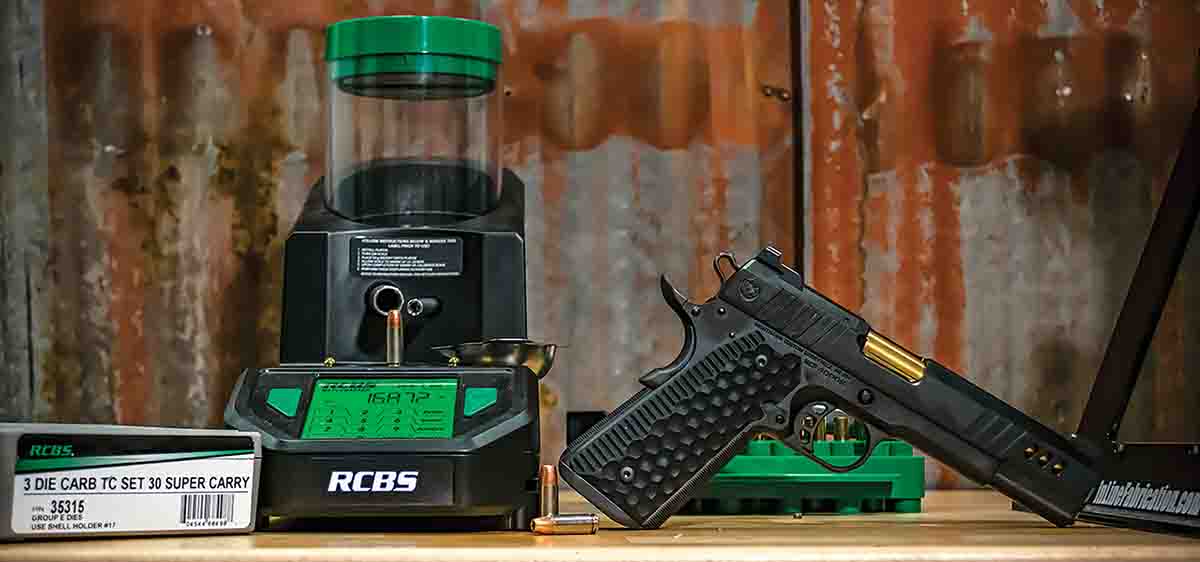
The Nighthawk 1911 is packed full of features with each part of the handgun fit by a single gunsmith. From the sights to the springs, the quality is top-notch.
For more information on this handgun and cartridge, check out
Handloader TV on YouTube. All loads listed here are also available on our sister website at
LoadData.com.





.jpg)
.jpg)


